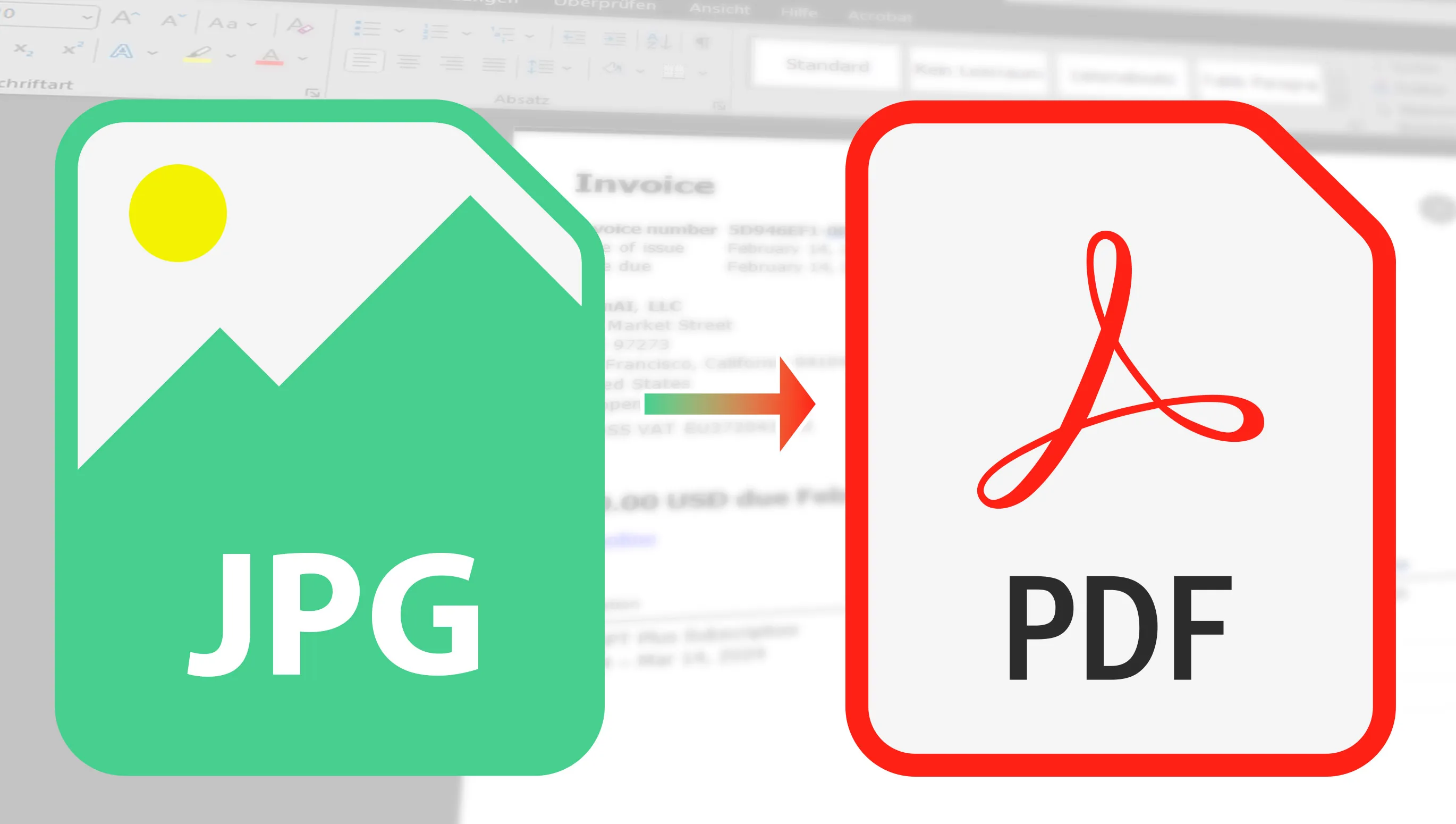Do you sometimes face the challenge of saving your JPG images quickly and easily as PDFs? Whether it's for the office, university or simply because you want to share your photos in a more manageable format - there are many reasons. But don't worry, today I'm going to show you some ingenious tools that will help you master this process in no time at all. From simple online converters to advanced software that gives you more control, I've got something for everyone. So, grab your JPGs and let's get started!
Table of Contents
Free online tools: My favorites for converting JPG to PDF
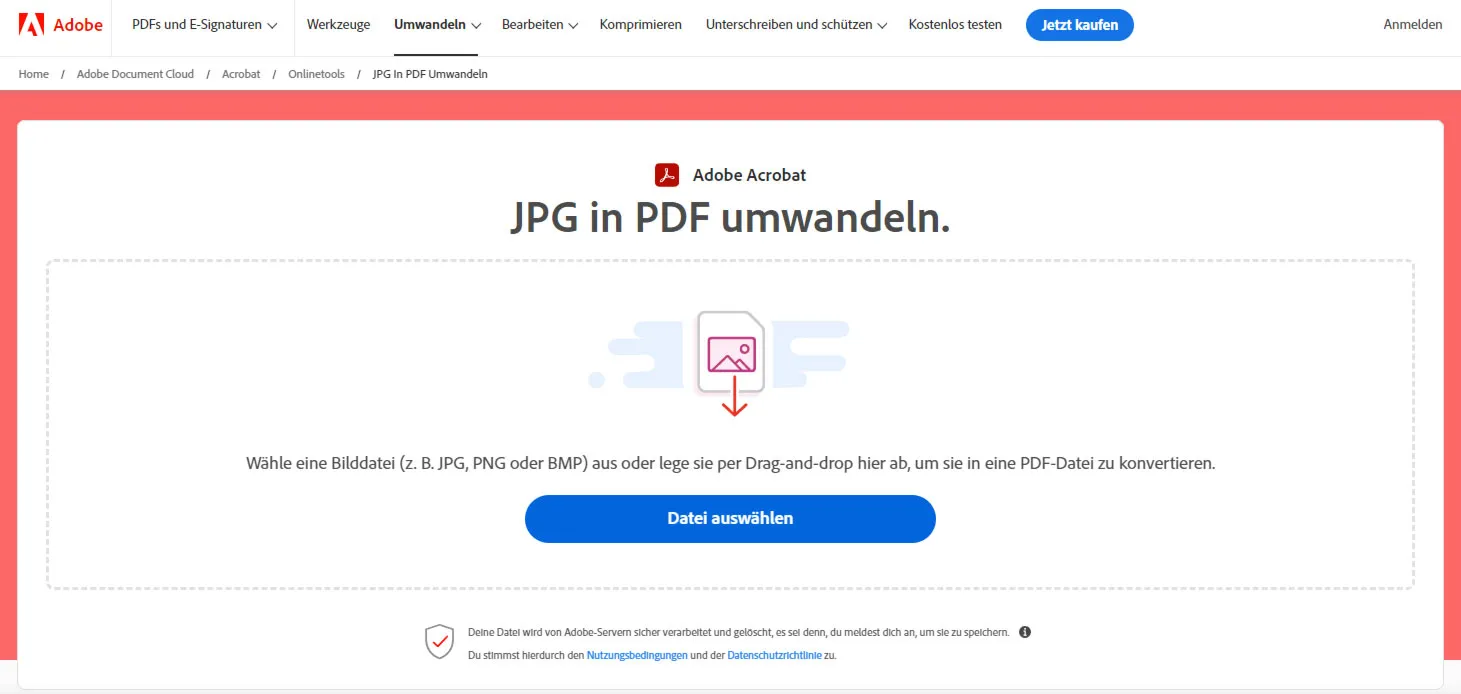
It's fascinating how many practical and user-friendly online tools there are, and I've picked out a few favorites that I don't want to withhold from you.
First, let's take a look at ILovePDF. This tool is a real all-rounder when it comes to PDFs. Simplicity and efficiency are the be-all and end-all here, and you'll be surprised how fast the conversion process is. I also really like all the options for how the PDF and the images it contains should look in the end. This is followed by other good tools, with Acrobat surprisingly taking last place.
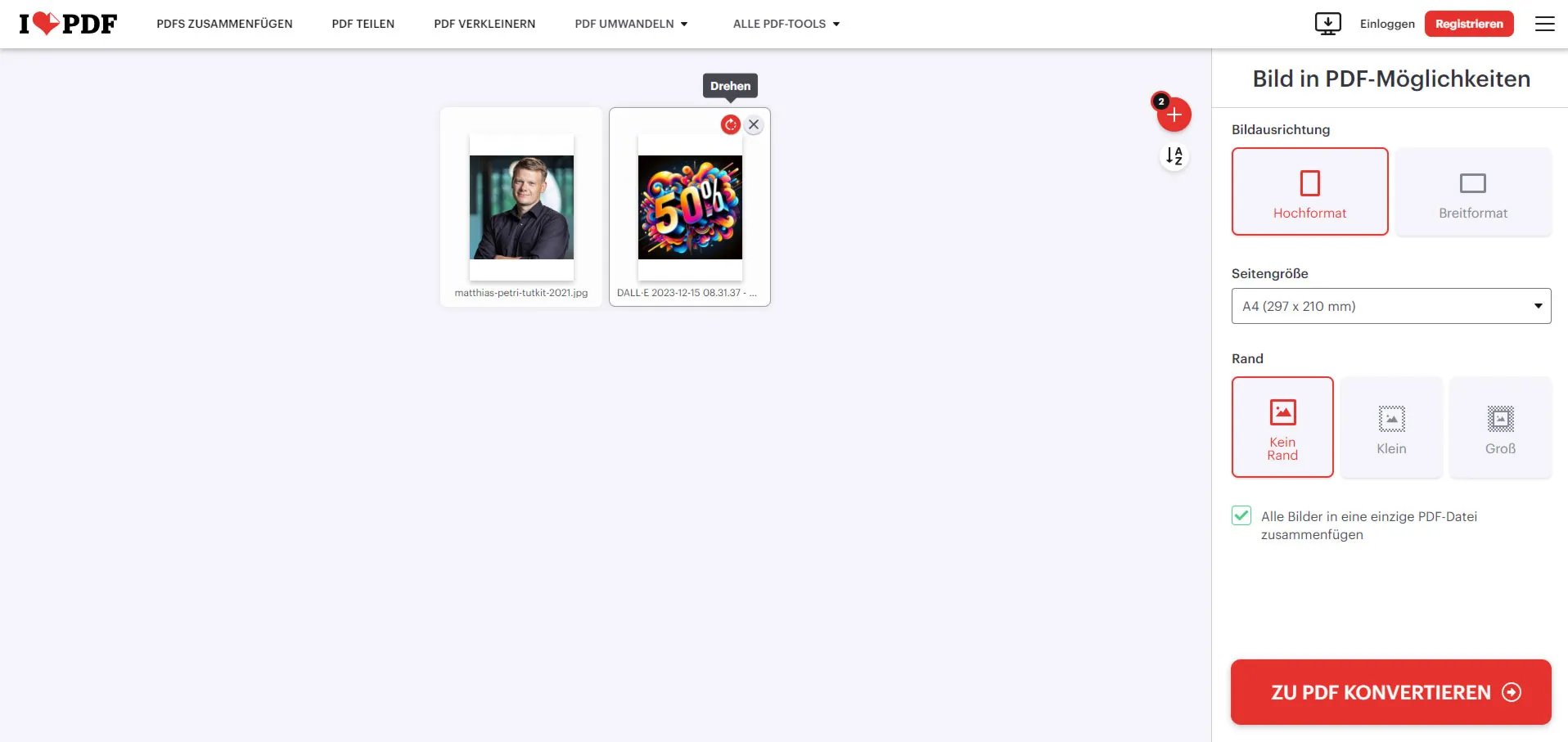
These tools are just the beginning. There is a whole range of other options that I will introduce to you. Each of them has its own strengths, and I'm sure you'll find the perfect tool for your needs.
- ILovePDF: The absolute front runner! It couldn't be simpler and, above all, I have clearly presented all the options for setting up the images here. I can also place several images within a PDF.
- JPG2PDF: Interface not quite as pretty as Adobe's, but I can have as many JPG files as I want merged within one PDF file. Top!
- Smallpdf: Here, too, I can convert several images at once and even have the option of setting how large the margin should be and whether the orientation should be landscape or portrait.
- Adobe Acrobat: Simple and okay. Works well, but one thing I don't like: I can only upload a JPG file and have no way of aligning the images.
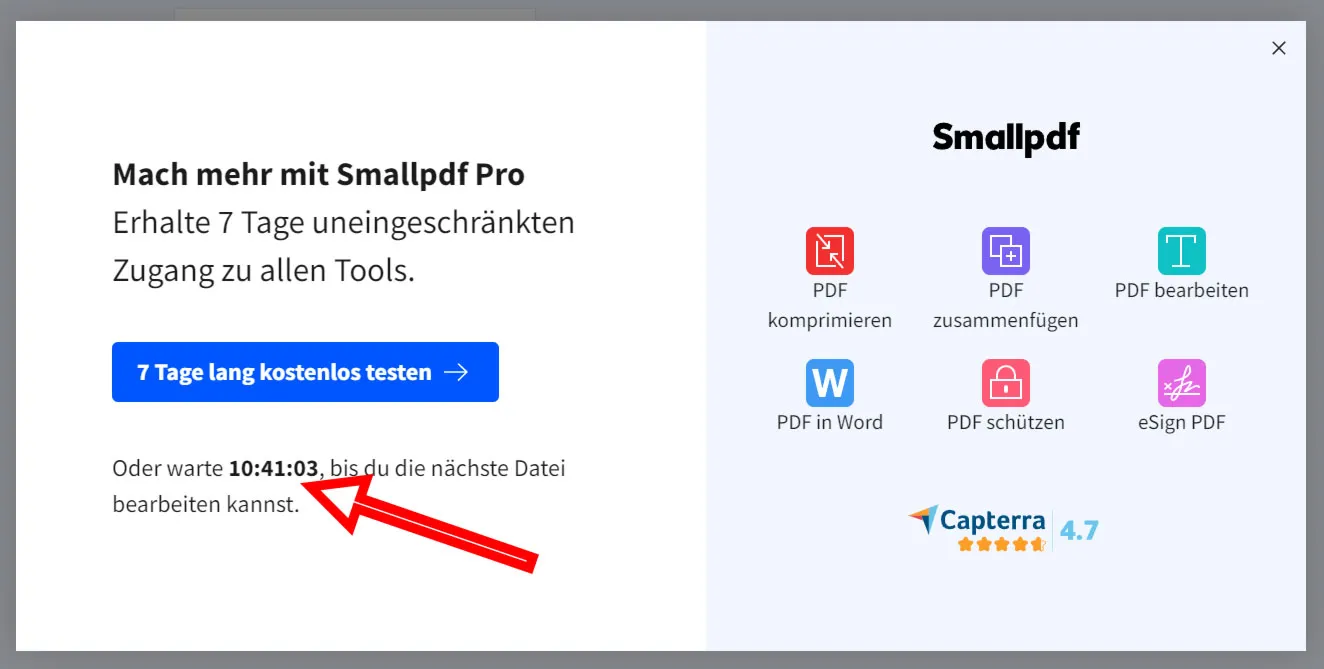
When I tested the various tools for converting JPG files into PDFs , I noticed that although they all work effectively, they often come with certain limitations. Take Smallpdf for example - a great tool that does its job really well. However, I was only able to convert two files before I was given the choice of either waiting more than 10 hours or upgrading to the Pro membership.
The performance of all the tools for converting JPG to PDF is really impressive. Only Adobe Acrobat, which is often considered the ultimate, is at the bottom of the list when it comes to JPG to PDF conversion features. Therefore, there is absolutely no reason to ignore the free online tools that effectively convert your JPGs to PDFs.
Popular free software for converting JPEG to PDF
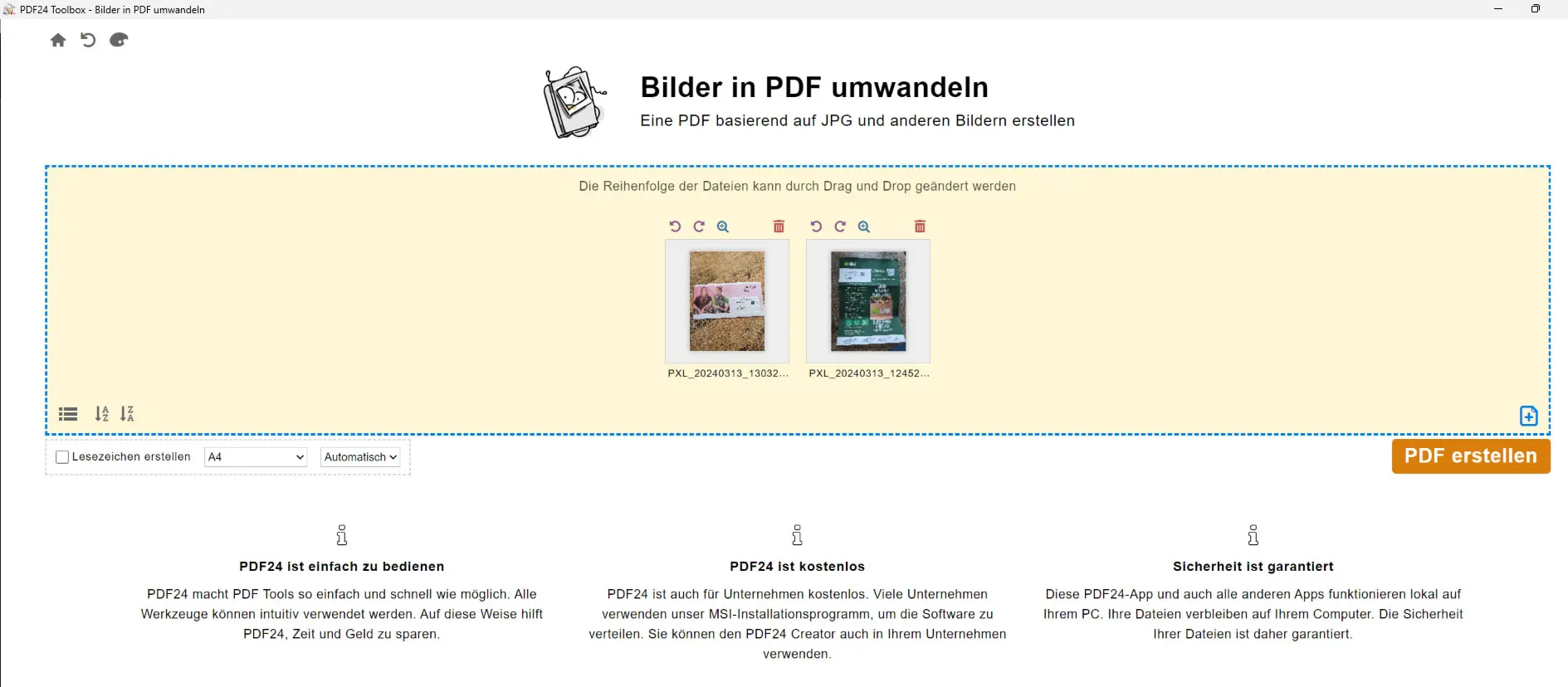
There are various free software tools that enable the conversion of JPG to PDF and at the same time offer me many options for alignment etc.. Such tools are particularly useful if you have many JPG files that you want to share via e-mail or upload online as a single PDF file (e.g. application portfolio).
- PDF24 Creater : It's truly amazing: a wealth of features, and all completely free, even for commercial purposes. When converting from JPG to PDF, these tools offer numerous setting options, for example to adjust the image alignment and the output format. Simply great!
- ILovePDF: As I mentioned, this tool has a lot more to offer than just JPEG to PDF conversion - it also gives you the option to download an application. But beware: although the installation file is quite small, more than 100 MB of additional data will be downloaded after installation. Incidentally, the program works on both Windows and Mac. One small catch, however, is that you can only convert two files in a given period of time, but this is completely sufficient for many purposes.
- Image To PDF or XPS : Although the program is very old (last update at the end of 2018), it works perfectly under Windows (also 11). However, the program looks like it did 20 years ago. BUT: It has numerous options and is damn fast. So ... Looks aren't everything :-)
Save file size before converting to PDF
In the previous tips, I focused on how you can convert an existing JPG file to PDF. But did you know that there are a few steps you can take before you even convert your image to PDF to optimize the file size? Here are four handy tips to help you create a slimmer PDF right from the start:
- Reduce resolution: Reduce the resolution of the image. If you want to use the image online or don't need it in full print quality, you can reduce the pixel dimensions. This will significantly reduce the file size while still making the image look good for most applications.
- Adjust quality: When saving a JPG image, you can often adjust the quality level. Lower quality results in a smaller file size, but can also affect the image quality. Experiment with different settings to find the right balance between quality and file size.
- Reduce color depth: If your image does not need the full color depth, you can reduce the number of colors used. For example, an image that consists mainly of text can be saved as a grayscale image instead of a full-color image to reduce the file size.
- RGB instead of CMYK: Before converting a document into a PDF, choosing the RGB color mode instead of CMYK can actually help reduce the file size. RGB, which stands for red, green and blue, is the standard color scheme for screen displays and requires three color channels. CMYK, on the other hand, which stands for cyan, magenta, yellow and black, is typically used for printing and includes four color channels. By using RGB instead of CMYK, you can reduce the amount of data that each image in your document requires, as one less color channel needs to be stored. This makes a significant difference in file size, especially for document-intensive images. For documents that are primarily viewed online or shared digitally, RGB is an efficient choice that reduces file size without significant loss of visual quality.
